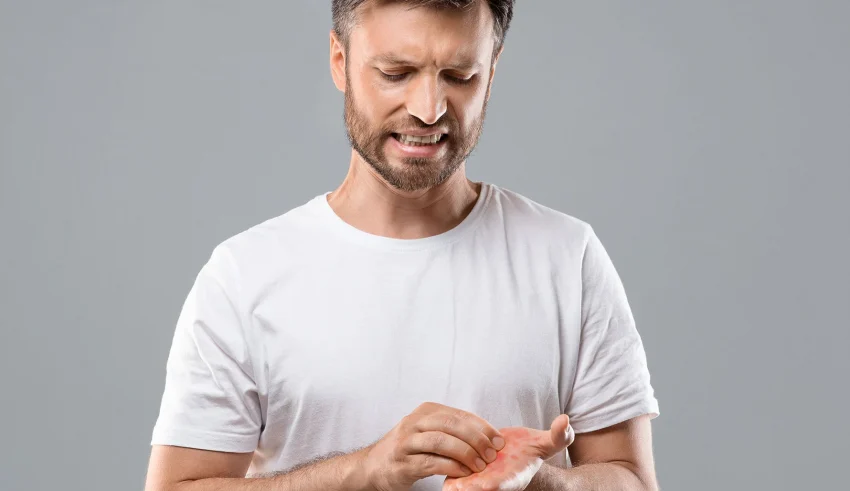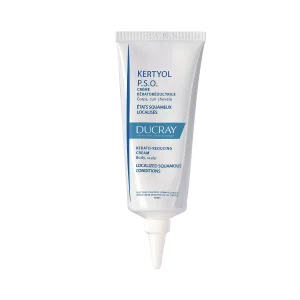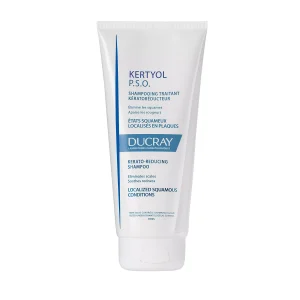
Psoriasis is a common, long-term condition that causes red, itchy, scaly patches. It tends to go in cycles, flaring up for a few weeks or months, then subsiding for a while or going into remission. In this article from The Dermo Lab, the dermatologist Dr. Joanna Khalil outlines the treatments available to help you manage the symptoms and live better with psoriasis.
What is psoriasis and what does it look like?
Psoriasis is a chronic skin condition that does not go away. People with psoriasis have thick, pink or red patches of skin covered with white or silver scales. These thick, scaly patches are called “plaques”. According to Dr. Joanna Khalil, psoriasis affects 2-4% of the population.
She points out that this skin condition can appear at any age, including childhood. It has two peaks of onset: 15-25 years and 50-60 years.
At first, you will see small red bumps. The bumps grow, and scales form on top. The surface scales come off easily, but the scales underneath stick together. If you scratch the rash, the scales can break off from the skin and cause bleeding. If the rash continues to grow, lesions may form.
What part of the body does psoriasis affect?
The rash can appear anywhere. In most people, it covers only a few patches of skin. In severe cases, the patches cluster together and cover a large area of the body.
Psoriasis tends to affect the following areas:
- Elbows and knees
- The face, scalp, and inside of the mouth
- Fingernails and toenails
- The genitals
- The lower back
- Palms and feet
What causes psoriasis?
Psoriasis is an immune system problem. Your immune response overreacts, causing inflammation that results in new skin cells growing too fast.
Usually, new skin cells grow every 28 to 30 days. But in people with psoriasis, new cells grow and move to the skin’s surface every three to four days. The buildup of new cells replacing old ones creates the silvery scales of psoriasis.
Psoriasis is hereditary. Dr. Joanna Khalil indicates that about one-third of psoriasis patients have family members with psoriasis. She adds that a patient’s genetic profile influences the type of psoriasis and its response to treatment.
Dr. Joanna Khalil also notes that many factors aggravate psoriasis and can lead to worsening or flare-ups, such as:
- Skin injuries (cuts, abrasions, or sunburns)
- Stress
- Streptococcal or other infections
- Certain prescription medications
- Stopping oral steroids
- Obesity
- Smoking
- Excessive alcohol consumption
What are the different types of this skin condition?
Psoriasis can appear almost anywhere on the body, depending on the type.
- Plaque psoriasis is the most common type. It is characterized by patches on the trunk and limbs, especially the elbows and knees, and on the scalp. Fingernails and toenails may become thick and prickly and fall off their nail beds.
- Inverse psoriasis appears in the folds of the skin. It may look like thin pink patches without scales.
- Guttate psoriasis may appear after a sore throat caused by a streptococcal infection. It appears as small, red, scaly, drop-shaped patches in children and young adults.
- Pustular psoriasis is characterized by small pus-filled bumps on top of the red patches.
- Sebopsoriasis usually appears on the face and scalp with bumps and red patches covered with oily scales. Dr. Joanna Khalil indicates that this type is an overlap between seborrheic dermatitis and psoriasis and has characteristics of both conditions.
Keep reading to learn what is the difference between psoriasis and seborrheic dermatitis and how psoriasis is treated.
Seborrheic Dermatitis vs. Psoriasis
According to Dr. Joanna Khalil, seborrheic dermatitis is a common, chronic form of eczema that primarily affects the oil-rich areas of the scalp, face, and trunk. It is characterized by ill-defined scaly patches covered with yellowish, oily scales. On the other hand, psoriasis is characterized by thick, well-defined red patches covered with silvery scales that can appear anywhere on the body.
If you scratch the patches of psoriasis or try to remove them, they will probably bleed. In contrast, seborrheic dermatitis patches are usually easy to remove. Psoriasis patches may also be painful or tender, but seborrheic dermatitis is not.
How to get rid of psoriasis?
According to Dr. Joanna Khalil, psoriasis is a chronic skin condition that cannot be cured. It tends to persist throughout the patient’s life, with fluctuations in its extent and severity. Mild psoriasis is usually treated with emollients, topical steroids, vitamin D analogues, and calcineurin inhibitors.
1- Emollients:
These products can control flare-ups. In general, thick, greasy lotions, creams, and ointments that lock moisture into your skin are the most effective.
2- Topical steroids and creams:
These slow down your skin’s immune cells and reduce swelling and redness. Mild corticosteroid ointments are generally recommended for sensitive areas, such as the face or skin folds, and for treating extensive plaques. Topical corticosteroids can be applied once a day during flare-ups, and every other day or weekend only to maintain remission. Long-term use or overuse of strong corticosteroids can thin the skin. Over time, topical corticosteroids may stop working.
The following cream is a topical treatment that reduces keratosis and soothes redness in scaly skin conditions of the body and scalp. It eliminates scales, regulates scaling, and soothes redness.
Ducray Kertyol P.S.O. Concentrate
3- Vitamin D analogues:
Synthetic forms of vitamin D, such as calcipotriene and calcitriol, slow down the growth of skin cells. This type of medication can be used alone or with topical corticosteroids. Calcitriol may cause less irritation in sensitive areas.
4- Calcineurin inhibitors:
Calcineurin inhibitors – such as tacrolimus and pimecrolimus – reduce inflammation and plaque build-up. They can be especially helpful in areas of thin skin, such as around the eyes, where steroid creams are too irritating or can have harmful effects.
Calcineurin inhibitors are not recommended if you are pregnant, breastfeeding, or planning a pregnancy. This medication is also not intended for long-term use because of a potentially increased risk of skin cancer and lymphoma.
If you have psoriasis on your scalp, you can apply the following shampoo which helps remove flakes and soothe redness and itching. It reduces 78% of plaque thickness in just 1 month.
Ducray Kertyol P.S.O. Kerato-reducing Shampoo
Dr. Joanna Khalil indicates that for more extensive and severe cases, treatment options include:
- Phototherapy
- Oral medications (methotrexate, cyclosporine, acitretin)
- Biologic injections (TNFα inhibitors, IL-17 antagonists, IL-12/23 antagonists).
Each patient is treated according to the type of psoriasis he/she has, the extent of damage, comorbidities, and response to previous treatments.
Will this skin condition ever go away?
There is no cure for psoriasis. It can come and go throughout your life. Treatment can relieve symptoms so you can be at your best. Dr. Joanna Khalil notes that in some cases, psoriasis can go away without treatment, a process called “spontaneous remission. This indicates that the immune system has stopped the attack on the body. However, these cases are rare.
Dr. Joanna Khalil warns against scratching psoriasis patches, as this can cause bleeding and damage the underlying skin. It can also lead to further irritation and an increased risk of infection.
A note from The Dermo Lab
Psoriasis, an itchy skin condition, can appear and disappear throughout life. It is related to an overactive immune response and is not contagious. If you have skin changes that do not go away, talk to your doctor. There is no cure for psoriasis, but psoriasis treatments can improve symptoms.
Dr. Joanna Khalil affirms that psoriasis tends to persist and can result in plaques that continue to spread and increase in size if you do not treat it.
Your doctor may prescribe a special cream or moisturizer or medication. Other therapies are available if creams or medications do not work.
Last Updated on April 16, 2024











